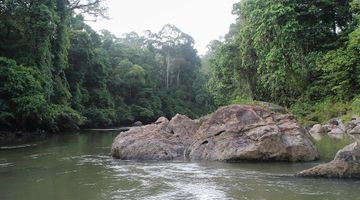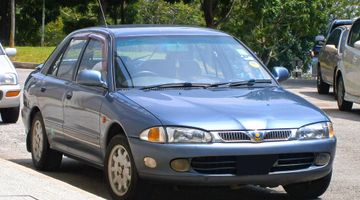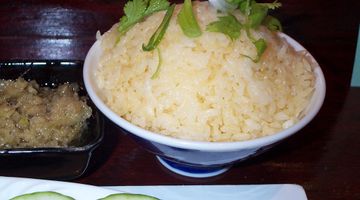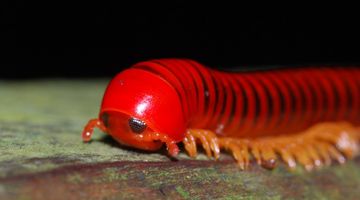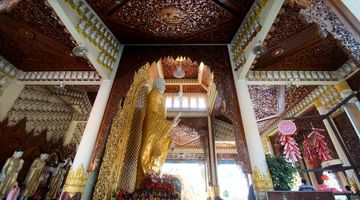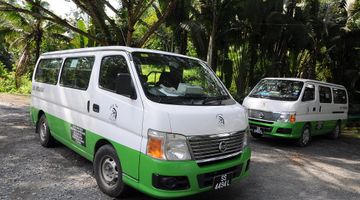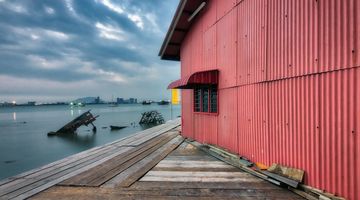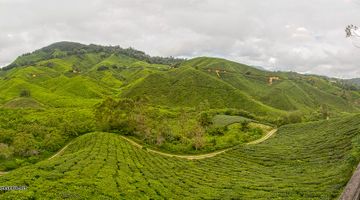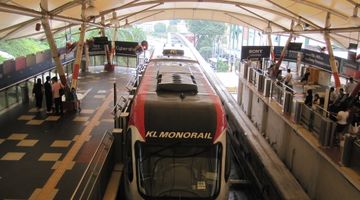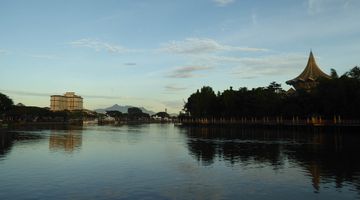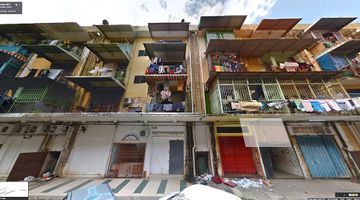Top 10 Most Colourful Festivals in Malaysia
If you’re looking for a cultural experience and want to enjoy local traditions on your trip to Southeast, head to Malaysia for one of their many festivals. There are lots of festivals in Malaysia that can be either religious or cultural-based. Malays, Indians and Chinese along with indigenous groups make up the demographics, and each has their own customs, traditions and celebrations. Festivals often result in a public holiday at either the state or national level.
Are there many festivals held throughout the year in Malaysia?
The country has a rich melting pot of religious groups, including Muslims, Christians, Buddhist, Hindus and Sikhs and hundreds of different ethnic groups. Because of this, there are multiple events each month. West and East Malaysia often have their separate cultural activities too. Some have open houses where the host puts on a spread of food and invites family and friends. Others involve prayers at the mosque or temple.
Events are split into two categories: religious and cultural. The religious festivals include Eid, Chinese New Year and Deepavali, which are like the other celebrations around the world, but with a Malaysian twist. For example, in the West Christmas involves eating turkey and giving presents. Malaysians tend to have a much higher church attendance, open houses with barbeques and a relative lack of gift giving. In short, Christmas here will be unlike anything you have ever experienced.
Those in Sabah and Sarawak have their roots in ancient pagan traditions such as the annual Harvest Festival. Before the arrival of mainstream religion, indigenous tribes practised paganism. Ethnic groups preserve their traditions with the festivals today. And while life may not involve the ancient rituals, it’s still an essential part of their culture.
10 best festivals in Malaysia
Here are ten of the best festivals in Malaysia in chronological order including religious ones like Eid and Thaipusam as well as the Sabah and Sarawak’s Harvest Festivals. Foreigners are usually welcome, even the religious ones, giving you the chance to experience something completely different on your trip to Malaysia.
1. Thaipusam (late January/ early February)
Malaysia has a sizable Tamil population in the western parts of the country, especially around Kuala Lumpur. During either late January or early February when the moon is full, the Tamils hold one of their most important events. Thaipusam commemorates Murugan defeating an evil spirit called Soorapadman.
During this festival, you’ll see devotees pierce parts of their body, cheeks and tongue. Some carry a Kavadi. A Kavadi is a decorative item that worshipers use to penetrate their body. From a foreigner’s perspective, Thaipusam is unusual and somewhat unique to the Tamil community making it unlikely you’ll get to experience it again.
For a more visual idea of what this festival entails and if it’s something you’d want to witness, check out pictures and videos online first. The gruesomeness may be too much for some.
In Malaysia, Thaipusam takes place annually at Batu Caves on the outskirts of Kuala Lumpur. Batu Caves has a Hindu temple inside a cave. Visitors need to walk up 272 steps to reach the temple.
2. Chinese New Year (February)
Chinese New Year is the largest Chinese Festival in Malaysia. During the event, you’ll see lion and dragon dances around the city, which involve people dressing in costumes to perform ritualist dances for good luck and to chase evil spirits away. Chinese Malaysians will have the dances performed at their homes, shops, businesses. Some cities have lion dances, performances and traditional music in public ceremonies.
Malls and public spaces have red lanterns for decoration. Children and teenagers traditionally get ‘ang pow’, a red packet filled with lucky money. Red is the colour of good luck in Chinese culture. Mandarin oranges are very popular during this festival, and every house you visit will give you an orange.
The Lantern Festival concludes the 15 days of Chinese New Year. Children will attend temples in the evenings carrying paper lanterns.
3. Wesak Day (May)
Malaysian Buddhists celebrate Wesak Day, or Buddha’s Birthday, on Sunday closest to the May’s full moon. Buddhists around the country will go to the temple and attend a service. The goal of one of the most important religious celebrations in the Buddhist world is to honour Gautama's birth, enlightenment and death.
Festivities begin at the temple with devoted monks dressed in saffron robes mediating and chanting while burning incense and making prayers. Some parts of Malaysia, such as Penang with a sizeable Buddhist community, have processions filled with flowers and candles. If you’re in Malaysia towards the end of May, check online to see what activities and festivities are taking place near you. Or, head to one of the temples and watch the celebration.
4. Kaamatan Harvest Festival in Sabah (30th and 31st May)
Sabah’s most significant cultural event takes place annually on the 30th and 31st May. The Kaamatan Harvest Festival is an ancient pagan celebration to honour the successful harvest by the ethnic Kadazan-Dusun, a tradition that dates back centuries. Today, however, there’s more emphasis on the social side of things and having a party with lots of food, drink and music.
Local Sabahans invite their friends and family to their house and serve endless quantities of food and drink while others join in public events. Various exhibitions are held around the Kadazan Dusun Cultural Association Hall (KDCA) located in Penampang. The public celebrations have traditional dancing with dancers wearing ethnic costumes. Expect lots of Tapai and Lihing, a type of rice wine. You’ll also find lots of regional foods including hinava (fermented fish) and bambangan (a kind of pickled fruit with yellow flesh similar to mango).
A beauty pageant, Unduk Ngadau, takes place inside the cultural hall and the winner is announced at the end of the Harvest Festival. Local Sabahan women from around the state come to show off their appearance and glamour in the hope of being crowned this year’s Unduk Ngadau, which is a prestigious title.
5. Gawai Harvest Festival (1st and 2nd June)
Gawai is Sarawak’s version of the Harvest Festival. Indigenous groups including the Bidayuh, Murut, Kayan and Iban take part in one of the state’s largest and most popular festivals. In the same way as Kaamatan, Gawai was once a pagan festival that has evolved into more of a public party rather than religious celebration.
Sarawakians often have lots of open houses with an abundance of food and drink. Friends and family will come, and it’s typical to visit multiple open-houses in one day. Sarawak’s version of rice wine is called ‘tuak’ and drank in large volumes throughout the day. They also have a beauty pageant called Kumang and Keling Gawai where both men and women can enter. Gawai culminates with the crowning of the King and Queen (Keling and Kumang) of the Festival.
Few foreigners have the chance to experience the Harvest Festival, and if you’re in either Sabah or Sarawak at the time, it's highly recommended to check it out. Various public events take place, and if you have a local contact, you’re almost guaranteed to get an invitation to come along.
6. Eid (Hari Raya Aidilfitri, June)
Eid is the largest celebration in the Islamic world. Hari Raya doesn’t have a fixed date each year. Instead, religious experts determine the time based on the lunar Hijri month.
Before Eid, Muslims around the world, including those in Malaysia, fast for a month during Ramadan. Fasting involves not eating, drinking and smoking from sunrise to sunset. Eid celebrations start at the end of Ramadan and is the biggest festival in Malaysia. People go to the mosque in the morning for prayers before returning home and having an open house. Typical food includes rendang (meat), satay (Malaysian kebabs) and sticky rice along with a large variety of biscuits and sweets.
7. Rainforest World Music Festival, Kuching, Sarawak (mid-July)
The Rainforest World Music Festival takes place in Kuching, Sarawak, in mid-July. Ever since 1998, international musicians descend on Sarawak’s capital to perform in this three-day event. The music festival has worldwide recognition and attracts quite a few foreign tourists for the live music and performances. Genres often include modern styles mixed with traditional instruments to create a hypnotic fusion of sound. The Sarawak Cultural Village hosts the event and has workshops, crafts and food too.
8. Independence Day/ National Day (31st August)
On 31st August 1957, Malaysia declared their independence from the British and formed the Federation of Malaya. After an extended period of colonial rule, Malaysia, at that time was known as Malaya, finally gained sovereignty.
Most events take place on Merdeka Square in Kuala Lumpur. As the clock strikes midnight on the 31st August, a firework display fills the Kuala Lumpur sky with colour to start Independence Day celebrations. Later in the day, you’ll see parades in the streets and performances by school children and civil servants. After the ceremony, live concerts where thousands of locals head to the venues to enjoy the event. If you haven’t experienced Malaysian’s National Day celebrations before, head down to Kuala Lumpur and join in. Just follow the crowds.
9. Deepavali (November)
Deepavali, or the ‘Festival of Light’s, is the most colourful festival in Malaysia. Local Hindus celebrate by using coloured chalk to draw patterns and shapes on the ground while at the same time scattering coloured rice. All races and religions are welcome to join in the event, which takes place in people’s houses or public areas such as the mall.
If you’re in Malaysia during this event, expect a lot of Indian food on sale in the streets. Homemade samosas, murukku and curries get sold on stalls making an already wide variety of Indian food even more readily available. Little India, near KL Sentral, in Kuala Lumpur will be full of colour and activities at all times of the day and will be well worth checking out.
10. The Dragon Boat Festival (December)
The Penang International Dragon Boat Festival is Penang’s biggest event and a tourist’s favourite. This annual two day festival is organised by the Penang State Tourism starts from 9:00am to 5:00pm. More than 40 Malaysian and international racers come to the Teluk Bahang Dam, which is located 18 kilometres from Georgetown, to compete against each other in colourful traditional boats accompanied by drum beats.
Competitors come from around South East Asia including Singapore, Hong Kong and China. If you get the chance to attend, there’s also lots of local food on sale and performances to entertain the crowd. The Dragon Boat Festival is a unique experience and is a favourite for both locals and tourists who are in Penang.
Conclusion
Whatever time of the year you’re visiting Malaysia, there’s probably going to be some religious or cultural festival you can attend. Malaysia’s multiculturalism and diversity in their ethnic groups and religion create a lot of events and celebrations. As a tourist, you should feel welcome and try to attend to enhance your travel experience in Malaysia.





